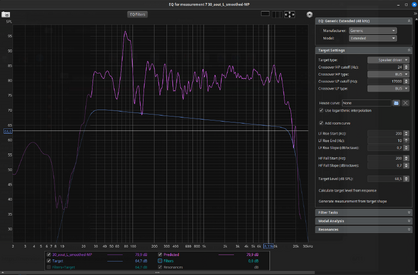moedra
Member
- Joined
- Mar 1, 2021
- Posts
- 141
I do think something is wrong with his copy of REW, or something else is weird there.Happy to clarify.
I did no test anything outside your method. I followed your method Target-MP / L Smoothed-MP (A/B = L Inv). Exported as wav with the MP radio button selected.
Everything else I said is only theory to determine why the poster had different IR than myself.
And your filters sound as they should? I know that's difficult to put into words, but you know what I mean. Do they sound good? Is the phantom center intact? Are transients punchy? Is the soundstage nice and wide? It should be...
















